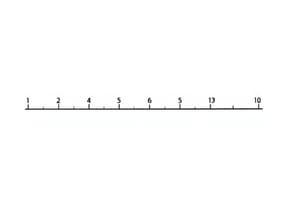Podcast
Questions and Answers
The degree to which a measurement represents the theoretical ______ it is intended to measure is known as construct validity.
The degree to which a measurement represents the theoretical ______ it is intended to measure is known as construct validity.
construct
Test-retest ______ method assesses the stability of a measure over time.
Test-retest ______ method assesses the stability of a measure over time.
reliability
Systematic errors are predictable and consistent ______, while random errors fluctuate around the true value.
Systematic errors are predictable and consistent ______, while random errors fluctuate around the true value.
inaccuracies
Quantitative methods involve ______ data and statistical analysis to determine relationships.
Quantitative methods involve ______ data and statistical analysis to determine relationships.
Informed ______ must be obtained before collecting data from participants.
Informed ______ must be obtained before collecting data from participants.
Measurement involves assigning numbers or labels to objects, events, or characteristics according to specific ______.
Measurement involves assigning numbers or labels to objects, events, or characteristics according to specific ______.
Nominal scales categorize data into distinct groups, but no inherent ______ exists among the categories.
Nominal scales categorize data into distinct groups, but no inherent ______ exists among the categories.
Ordinal scales have a natural ______ among the categories, but the differences between them are not necessarily equal.
Ordinal scales have a natural ______ among the categories, but the differences between them are not necessarily equal.
Interval scales have ordered categories with equal ______ between them, but no true zero point.
Interval scales have ordered categories with equal ______ between them, but no true zero point.
Ratio scales have ordered categories with equal intervals between them and a true ______ point.
Ratio scales have ordered categories with equal intervals between them and a true ______ point.
Reliability refers to the consistency or ______ of a measurement.
Reliability refers to the consistency or ______ of a measurement.
Validity refers to the accuracy or ______ of a measurement.
Validity refers to the accuracy or ______ of a measurement.
Content validity assesses the extent to which a measurement reflects all important aspects of a ______.
Content validity assesses the extent to which a measurement reflects all important aspects of a ______.
Flashcards
Measurement
Measurement
Assigning numbers or labels to objects, events, or characteristics following specific rules.
Nominal Scale
Nominal Scale
Categorizes data; no inherent order or ranking.
Ordinal Scale
Ordinal Scale
Categorizes data with a natural order, but differences aren't equal.
Interval Scale
Interval Scale
Signup and view all the flashcards
Ratio Scale
Ratio Scale
Signup and view all the flashcards
Reliability
Reliability
Signup and view all the flashcards
Validity
Validity
Signup and view all the flashcards
Measurement Scale
Measurement Scale
Signup and view all the flashcards
Construct Validity
Construct Validity
Signup and view all the flashcards
Test-retest Reliability
Test-retest Reliability
Signup and view all the flashcards
Systematic Error
Systematic Error
Signup and view all the flashcards
Quantitative Method
Quantitative Method
Signup and view all the flashcards
Ethical Considerations
Ethical Considerations
Signup and view all the flashcards
Study Notes
Measurement Definitions
- Measurement involves assigning numbers or labels to objects, events, or characteristics according to specific rules.
- A measurement scale represents the relationship between numbers and the properties they represent.
- Different types of measurement scales exist (nominal, ordinal, interval, ratio) with varying properties.
Nominal Scales
- Nominal scales categorize data into distinct groups or categories.
- No inherent order or ranking exists among the categories.
- Examples include gender (male/female), eye color, or type of vehicle.
- Statistical analysis is very limited to frequencies and modes.
Ordinal Scales
- Ordinal scales categorize data into distinct groups, and the categories have a natural order.
- The difference between categories is not necessarily equal.
- Examples include customer satisfaction levels (e.g., dissatisfied, neutral, satisfied), education levels (e.g., high school, bachelor's), or rankings in a competition.
- Statistical analysis includes median, percentiles, and non-parametric tests.
Interval Scales
- Interval scales have ordered categories with equal intervals between them, but no true zero point.
- The difference between values are meaningful, but the ratio between values is not meaningful.
- Examples include temperature measured in Celsius or Fahrenheit (0°C doesn't represent an absence of temperature) or standardized test scores like IQ.
- Statistical analysis includes mean, standard deviation, correlation, and t-tests.
Ratio Scales
- Ratio scales have ordered categories with equal intervals between them and a true zero point.
- Ratios between values are meaningful.
- Examples include height, weight, age, income, or number of items sold.
- Statistical analyses can include all of the above plus geometric or harmonic means.
Reliability and Validity of Measurements
- Reliability refers to the consistency or repeatability of a measurement.
- A reliable measure produces consistent results on repeated administrations or by different raters.
- Validity refers to the accuracy or truthfulness of a measurement, whether it measures what it claims to measure.
- A valid measure accurately reflects the underlying construct.
Different types of Validity
- Content validity: Extent to which a measurement reflects all important aspects of a construct.
- Criterion-related validity: Degree to which a measurement predicts or correlates with an external criterion.
- Construct validity: Degree to which a measurement represents the theoretical construct it is intended to measure.
Evaluating Measurement Instruments
- Test-retest reliability method assesses the stability of a measure over time.
- Inter-rater reliability assesses the consistency between different raters.
- Internal consistency reliability evaluates the homogeneity of items within a measure.
Measurement Errors
- Measurement errors represent the difference between the observed value and the true value.
- Systematic errors are predictable and consistent inaccuracies, while random errors are unpredictable and fluctuate around the true value.
Evaluation Methodologies
- Quantitative methods involve numerical data and statistical analysis to determine relationships.
- Qualitative methods use descriptive data (interviews, observations) to understand experiences and perspectives.
- Mixed methods use both quantitative and qualitative approaches to gain a broader understanding.
Ethical Considerations in Measurement
- Participant privacy and confidentiality are essential.
- Informed consent must be obtained before collecting data from participants.
- Researchers must ensure data accuracy and integrity.
Studying That Suits You
Use AI to generate personalized quizzes and flashcards to suit your learning preferences.




